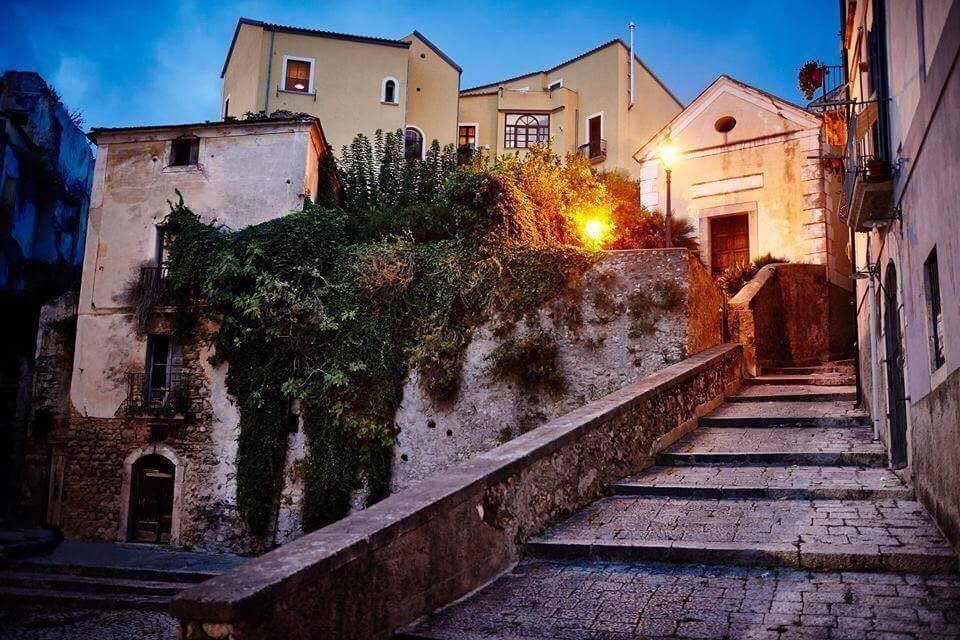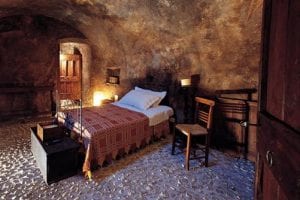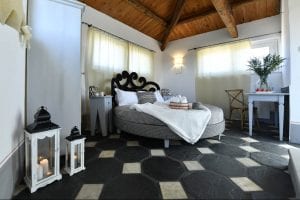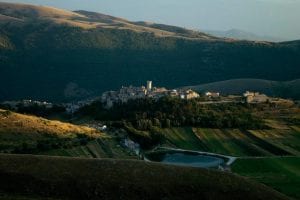Skift Take
While every destination tries to offer authenticity, few really deliver. But in Italy, scores of local passion projects are serving up the real deal — while helping rural areas make a comeback in a sustainable way.
As Venice continues to suffer from both climate change and overtourism, and cities like Rome and Florence are overrun with visitors during peak summer months, an alternative concept rooted in Italy’s ancient hill villages is gaining momentum. It’s designed for travelers who want to go beyond the usual stops on the Grand Tour and experience local life — without overwhelming residents.
Alberghi diffusi, the literal translation of which is widespread hotels (or scattered hotels), represents a unique model that redevelops abandoned buildings in small villages with an eye to hosting tourists. These lodgings, instead of being in one vertical building, are distributed horizontally among various restored buildings around the settlement, integrating guests within the community. At least one of those buildings houses a central reception and common space. Typical hotel services, like housekeeping and room service, are provided under the realm of a single manager.
Albergo Diffuso Comeglians, located in the northeastern region of Friuli-Venezia Giulia, is made up of rooms in former farms and stone barns, while the reception area is in an old dairy. In Matera, Sextantio Le Grotte Della Civita has inserted accommodations inside sassi, the cave dwellings that sheltered locals until the Italian government moved residents out in the 1950s. Its 18 bedrooms are set in simply- furnished, candlelit caves.
Rural Revival
While there are now scores of alberghi diffusi around Italy, the model didn’t exist in the early 1980s. That’s when hotel marketing consultant Giancarlo Dall’Ara was looking for ways to help bring the villages of Friuli-Venezia Giulia back to life. The region had suffered from a major earthquake in 1976. When Dall’Ara went to visit several years later, he discovered “villages with beautiful houses, but they were empty. The inhabitants had left. In order to help these villages be reborn, the idea was to create a new concept, a new frontier of tourism for villages.”
Dall’Ara realized that building hotels wasn’t the proper fix for these burgs: “Hotels are solutions for towns but not villages. Villages are small and a hotel would have an outsized impact on the community.”
Traveling to Japan for an international exposition in the mid-1980s, he learned of the concept of the ryokan, or traditional inn. His ryokan stays led to the realization that each country can create a system of regional hospitality, based on the roots of the culture. “It was a model including an original physical/structural point of view as well as a unique philosophy and authentic services to guests,” said Dall’Ara.
At the same time, he wanted to incorporate the history of Italian hospitality. Between the Renaissance era and the 1800s, many wealthy families would build small houses near the manor to put up extended family and visitors. This spurred the thought that lodging facilities could be spread out among buildings.
Dall’Ara set out to hone the concept, focusing on preservation, sustainability, and economic feasibility. He developed a list of standards.
All properties were required to have at least seven guest rooms. Both the services and the comforts of traditional hotels had to be offered.
Most important of all, Dall’Ara wanted to ensure that alberghi diffusi were located amid the houses of local residents. “You can’t open a true albergo diffuso where there are no inhabitants. Otherwise, it’s a touristic village.” Guests must be able to experience “the lifestyle of a real village with real inhabitants. After all, we don’t sell rooms, but the opportunity to live like the locals.”
The National Association of Alberghi Diffusi helps guarantee these standards.
An Albergo Diffuso Comes Into Being
Italian entrepreneur Daniele Kihlgren was kicking around the countryside of Abruzzo on a motorcycle in the early 2000s when he discovered the largely abandoned village of Santo Stefano di Sessanio.
Two hours east of Rome, it’s a classic example of a fortified Italian medieval hill town. In the Middle Ages, it was part of the Barony of Carapelle, an estate in the hands of the Medici family. A fueling stop for the wool trade, there had been a settlement here since pre-Roman times.
With growing urbanization, however, the once-booming hamlet had turned into a ghost town. The population had dwindled from 1,400 in 1900 to 70 in 2000. But the ancient buildings still existed.
“This village was paradoxically saved by abandonment,” said Kihlgren, thanks to “the dramatic destinies of emigration that had bled out Southern Italy.” When he came upon Santo Stefano, “everything here was frozen in the past.”
Kihlgren soon “began to explore the idea accountable for the identity of these places. Its added cultural value — but also economic and entrepreneurial — was driven by trying to do justice … to the ancestral fascination of a salvaged territory, in its historical and landscape integrity.”
“I know perfectly well how carefully we preserve statues, paintings, important palaces, and so on,” said Kihlgren. “But the significance of these villages, whose real added value is that they have a relationship with the countryside, has always been dismissed.” Yet “as the world gets faker and faker, people need this kind of (authentic) experience.”
And so began work on Albergo Diffuso Sextantio, a facility with 28 rooms, a wine bar, a restaurant, a meeting room, and a reception area. No new structures were built. Instead, Kihlgren and his team repurposed buildings formerly used as barns, stables, wine cellars, and lodging for farmers. Kihlgren said, “Wood and stone cottages have been restyled as suites, the village dungeon serves as a wedding room, and a former witch’s lair now hosts business meetings.”
He spent nearly five million euros revitalizing the village. The restoration was meticulous, using only local materials — like terra-cotta tiles, wood, and limestone — while striving for historical accuracy.
Community Buy-In
Part of the success in Santo Stefano, said Kihlgren, is this authenticity, and another is the commitment to the principle that nothing new would be built. The concept, called “inedificabilità,” took immense effort to get accepted. He suggested to the local authorities that he would invest in the restoration only if there was a blanket ban on all new construction.
He convinced them, he said, by getting buy-in from the locals. “We wished to organize, with the local political system, a way of preventing loss of the integrity of the extraordinary landscape that comes with (a) tourist destination,” noted Kihlgren. “The strenuous opposition that we thought we would encounter with local politics didn’t come about. The inhabitants of the village collegially advocated the full right of these conservation claims for ancient respect for the area.”
Others have followed his lead over the years, buying buildings and converting them into lodging establishments, galleries, or restaurants. As a result, Santo Stefano di Sessanio is now a popular spot for long-haul tourists and for Romans visiting for the weekend. Some younger people, who grew up in the town and left seeking economic opportunity, have returned to open businesses catering to the visitors.
Kihlgren’s ability to get community buy-in was key. According to Dall’Ara, “Once the locals understand that tourism can provide economic opportunities, it opens their eyes.” Residents start organizing tourism-related businesses, and people who have moved away may decide to come back so they can have a part in rebuilding the community, he said. And in rebuilding these communities, they are bringing more diversity to Italy’s tourism offerings.
The Daily Newsletter
Our daily coverage of the global travel industry. Written by editors and analysts from across Skift’s brands.
Have a confidential tip for Skift? Get in touch
Tags: alternative accommodations, italy, luxury
Photo credit: The old center of Eboli, Italy, has, in part, been converted into an albergo diffuso. In this alternative accommodations model, lodgings are housed in restored abandoned buildings that are spread out among a village community, enabling guests to experience local life. Alberghi Diffusi National Association



